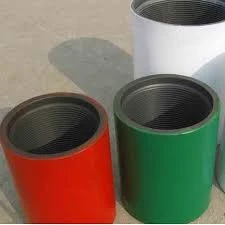- Afrikaans
- Albanian
- Amharic
- Arabic
- Armenian
- Azerbaijani
- Basque
- Belarusian
- Bengali
- Bosnian
- Bulgarian
- Catalan
- Cebuano
- Corsican
- Croatian
- Czech
- Danish
- Dutch
- English
- Esperanto
- Estonian
- Finnish
- French
- Frisian
- Galician
- Georgian
- German
- Greek
- Gujarati
- Haitian Creole
- hausa
- hawaiian
- Hebrew
- Hindi
- Miao
- Hungarian
- Icelandic
- igbo
- Indonesian
- irish
- Italian
- Japanese
- Javanese
- Kannada
- kazakh
- Khmer
- Rwandese
- Korean
- Kurdish
- Kyrgyz
- Lao
- Latin
- Latvian
- Lithuanian
- Luxembourgish
- Macedonian
- Malgashi
- Malay
- Malayalam
- Maltese
- Maori
- Marathi
- Mongolian
- Myanmar
- Nepali
- Norwegian
- Norwegian
- Occitan
- Pashto
- Persian
- Polish
- Portuguese
- Punjabi
- Romanian
- Russian
- Samoan
- Scottish Gaelic
- Serbian
- Sesotho
- Shona
- Sindhi
- Sinhala
- Slovak
- Slovenian
- Somali
- Spanish
- Sundanese
- Swahili
- Swedish
- Tagalog
- Tajik
- Tamil
- Tatar
- Telugu
- Thai
- Turkish
- Turkmen
- Ukrainian
- Urdu
- Uighur
- Uzbek
- Vietnamese
- Welsh
- Bantu
- Yiddish
- Yoruba
- Zulu
Understanding API Casing Sizes and Their Importance in Industry Applications
Understanding API Casing Sizes A Comprehensive Overview
When it comes to oil and gas drilling, the significance of selecting the correct casing size cannot be overstated. Casing is a crucial component that ensures the stability of the wellbore and prevents the collapse of the well. It also protects groundwater from contamination and facilitates the safe extraction of hydrocarbons. One of the leading organizations in establishing standards for casing sizes and specifications is the American Petroleum Institute (API). This article delves into the various API casing sizes, their classifications, and their importance in drilling operations.
What is API Casing?
API casing is a type of pipe used in the drilling of oil and gas wells. This pipe is designed to withstand the high pressures and temperatures encountered during drilling operations. The API oversees the specifications for these casing pipes, ensuring they meet rigorous industry standards. API casing is generally available in several sizes, each suited for specific applications in drilling operations.
API Casing Sizes and Classifications
API casing sizes are categorized according to their diameter and wall thickness. The diameters typically range from 4.5 inches to 20 inches, and larger sizes can also be custom-manufactured for specific needs. Each casing size serves different purposes and is used in various stages of the drilling process, from the surface casing to production casing.
1. Surface Casing This is the first section of casing that is installed in a well. Its primary purpose is to protect freshwater aquifers from contamination during drilling. Surface casing usually has a larger diameter (often 10 to 20 inches) and is designed to withstand the mechanical stresses of the drilling process.
2. Intermediate Casing Installed after the surface casing, intermediate casing typically has a smaller diameter and provides additional support to the wellbore as it dives deeper into geological formations. This casing protects the well from unexpected pressures and prevents potential blowouts.
api casing sizes

3. Production Casing Once drilling reaches the target reservoir, production casing is installed to facilitate the extraction of oil and gas. This casing is usually the smallest in diameter compared to surface and intermediate casings. It ensures the efficient flow of hydrocarbons to the surface while preventing formation fluids from contaminating groundwater.
4. Liner Casing A liner is a special type of casing that is hung from a previous casing string rather than extending to the surface. This type is employed in situations where a full string of casing is not necessary, thus saving time and resources.
Importance of Selecting the Right Casing Size
Choosing the correct API casing size is critical for several reasons. First, it directly affects the integrity and safety of the wellbore. A well-sized casing ensures that the well can withstand the pressures encountered during drilling and production. Incorrect sizing can result in wellbore instability, leading to potential hazards such as blowouts or environmental contamination.
Additionally, the right casing size can optimize the production process. It allows for sufficient flow rates of hydrocarbons, ensuring that extraction is both efficient and cost-effective. Furthermore, using the correct casing size can prevent the need for additional casing runs, thereby reducing drilling time and costs.
Conclusion
In conclusion, understanding API casing sizes is essential for professionals in the oil and gas industry. From the surface casing that protects water resources to the production casing that optimizes hydrocarbon extraction, each casing type plays a vital role in safe and efficient drilling operations. As drilling technology continues to evolve and the demand for energy grows, the importance of adhering to API standards and selecting the appropriate casing sizes will remain a key focus for ensuring operational safety and environmental protection. With the right knowledge and cautious selection process, drilling operations can achieve both efficiency and sustainability in this critical sector.
-
Tubing Pup Joints: Essential Components for Oil and Gas OperationsNewsJul.10,2025
-
Pup Joints: Essential Components for Reliable Drilling OperationsNewsJul.10,2025
-
Pipe Couplings: Connecting Your World EfficientlyNewsJul.10,2025
-
Mastering Oilfield Operations with Quality Tubing and CasingNewsJul.10,2025
-
High-Quality Casing Couplings for Every NeedNewsJul.10,2025
-
Boost Your Drilling Efficiency with Premium Crossover Tools & Seating NipplesNewsJul.10,2025







